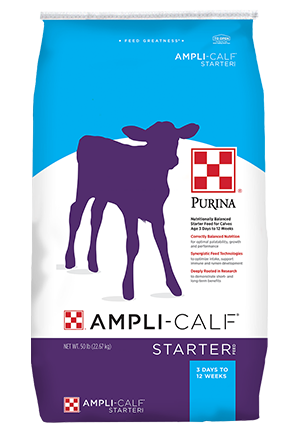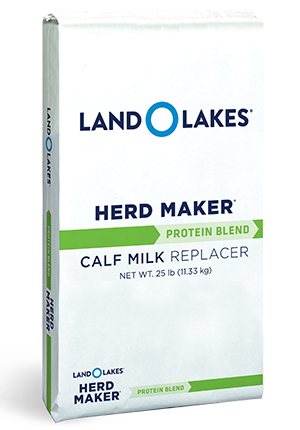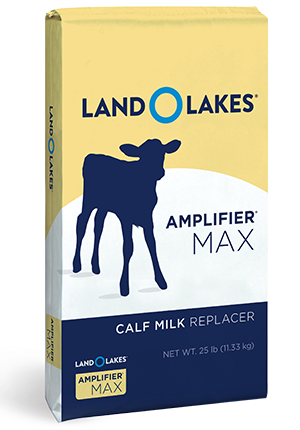
Three Tips to Reduce Dairy Ration Variation
Cow : Lactating Cow Nutrition
Cow : Transition Cow Nutrition
Your total mixed ration (TMR) mixer plays an integral role in the day-to-day operation of your farm. Variation in the dairy ration could negatively impact cow performance. Properly maintained feeding equipment can help ensure the ration on paper matches what’s delivered to the cow.
Paying close attention to your mixing equipment and what’s happening during the mixing process can help ensure consistency and maintain cow performance.
Follow these three tips to help mix and feed a consistent dairy ration:
As a matter of daily feeding management, observe feed at the feed bunk multiple times between feedings to determine the degree of ingredient sorting by the animals. This could include taking a sample for the Penn State Shaker Box assessment at load-out, and again every four to six hours, until the next load of feed is delivered.
A quick visual appraisal of shaker box samples may tell the story of sorting, faulty equipment, improper mixing time or inappropriate moisture levels. Your nutritionist can help assess samples and evaluate what’s working and what can be improved.2. Monitor TMR feed volume and mixing time
If you add too much feed to the TMR mixer or the mixer isn’t sized correctly for your dairy, it can result in improper mixing.
If this occurs, you may lose ingredients over the top of the equipment during mixing. Lost ingredients result in inconsistent mixing, ration variation and feed shrink. Mixing in smaller batches can help ensure ration consistency.
Mixing time is another key area to watch. Ideal mixing time is usually around three to five minutes (check the owner’s manual).
If the TMR is mixed for too long, feed particles will become smaller than desired. Too many small particles are a concern because the absence of long physical fiber can contribute to unhealthy rumen fermentation patterns. On the other hand, if the TMR isn’t mixed for enough time, ingredients may not be evenly distributed throughout the ration – resulting in diet intake variation from one cow to another.
Use a timer in the mixing process to help ensure all operators mix each load for the same amount of time.
Knife maintenance is especially important. If you don’t know the date your mixer’s knives were last inspected, it’s likely time to replace them. Replace knives based on manufacturer’s recommendations to ensure consistent mixing.
Also watch for dead spots – areas inside the TMR mixer where feed doesn’t get mixed properly, leading to ration variation. Dead spots can occur when the door on the feed mixer is worn out or the mixer isn’t sitting on a level surface. When evaluating mixer operations or making equipment adjustments, always do so in a safe manner.
Practices of routine maintenance to help avoid feeding delays and daily management will help to keep dairy rations consistent.
Consult with a Purina dairy nutritionist to learn more about how your dairy rations can be improved.
Learn more about managing dairy feed rations.
Paying close attention to your mixing equipment and what’s happening during the mixing process can help ensure consistency and maintain cow performance.
Follow these three tips to help mix and feed a consistent dairy ration:
1. Evaluate TMR feed mix uniformity
With the help of your nutritionist, evaluate particle size distribution for each diet using the Penn State Particle Separator, also called the Penn State Shaker Box, to assure mixing uniformity. This should include a more frequent, say monthly, or more involved TMR audit once or twice a year. The TMR audit should include taking samples at several points across the width of the feed bunk during feed-out for each type of diet to determine mixing and delivery consistency.As a matter of daily feeding management, observe feed at the feed bunk multiple times between feedings to determine the degree of ingredient sorting by the animals. This could include taking a sample for the Penn State Shaker Box assessment at load-out, and again every four to six hours, until the next load of feed is delivered.
A quick visual appraisal of shaker box samples may tell the story of sorting, faulty equipment, improper mixing time or inappropriate moisture levels. Your nutritionist can help assess samples and evaluate what’s working and what can be improved.
2. Monitor TMR feed volume and mixing time
If you add too much feed to the TMR mixer or the mixer isn’t sized correctly for your dairy, it can result in improper mixing.If this occurs, you may lose ingredients over the top of the equipment during mixing. Lost ingredients result in inconsistent mixing, ration variation and feed shrink. Mixing in smaller batches can help ensure ration consistency.
Mixing time is another key area to watch. Ideal mixing time is usually around three to five minutes (check the owner’s manual).
If the TMR is mixed for too long, feed particles will become smaller than desired. Too many small particles are a concern because the absence of long physical fiber can contribute to unhealthy rumen fermentation patterns. On the other hand, if the TMR isn’t mixed for enough time, ingredients may not be evenly distributed throughout the ration – resulting in diet intake variation from one cow to another.
Use a timer in the mixing process to help ensure all operators mix each load for the same amount of time.
3. Establish a TMR mixer maintenance plan
Establish a regular maintenance schedule for your feed mixer. Monitor wear and tear on the blades, knives, kicker plates, discharge chute, doors and load cells.Knife maintenance is especially important. If you don’t know the date your mixer’s knives were last inspected, it’s likely time to replace them. Replace knives based on manufacturer’s recommendations to ensure consistent mixing.
Also watch for dead spots – areas inside the TMR mixer where feed doesn’t get mixed properly, leading to ration variation. Dead spots can occur when the door on the feed mixer is worn out or the mixer isn’t sitting on a level surface. When evaluating mixer operations or making equipment adjustments, always do so in a safe manner.
Practices of routine maintenance to help avoid feeding delays and daily management will help to keep dairy rations consistent.
Consult with a Purina dairy nutritionist to learn more about how your dairy rations can be improved.
Learn more about managing dairy feed rations.



.png?width=300&height=430&ext=.png)

